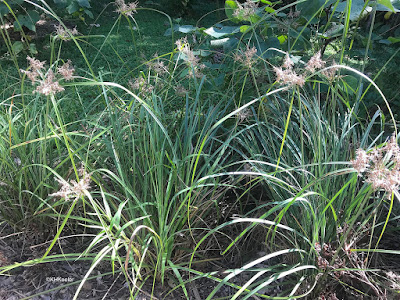 |
| Waikiki Beach at sunrise |
Here's a close up of the flower that is on the railing above:
 |
| hau flower (Hibiscus tiliaceus) |
We were greeted by a little green anole. It is not native, Hawaii has no native amphibians or reptiles. I should wish it back in its home in Central America, but I like anoles.
We wandered the trails, admired the plants, and had a docent-led tour talking about plants used by Hawaiians before Europeans came. There was lots of fun information in the tour, despite the fact that I needed to refresh my knowlege of Hawaiian plants. I particularly liked that the Hawaiian language used k's and l's sounds while Tahitian, similar but different, used t's and r's. Hawaiians want their culture told in their language, not Tahitian, so that the important crop (Colocasia esculenta) that I learned as taro, is now kalo. (No wonder I didn't recognize that one when first mentioned.)
 |
| kalo, Colocasia esculenta (aroid family. Araceae) |
 |
| rhododendron (Rhododendron aurigeranum) from New Guinea |
Another day we found the Koko Crater Botanic Garden (link)
The vistas seemed bleak: leafless trees (center) and hills that looked like they were shedding (and it kept showering, we narrowly missed getting drenched).
Ah, but those leafless trees are plumeria. The plumerias (called frangipani and temple tree elsewhere in the world, Plumeria, dogbane family, Apocynaceae) are from Central America. Some species are deciduous. That's what are planted above, and shown below. They go dormant, leaf out after flowering.
 |
| leafless plumerias |
 |
| plumeria with flowers |
I've been to Hawaii repeatedly but it remains a botanical attraction.
Comments and corrections welcome.
Kathy Keeler, A Wandering Botanist
More at awanderingbotanist.com






No comments:
Post a Comment